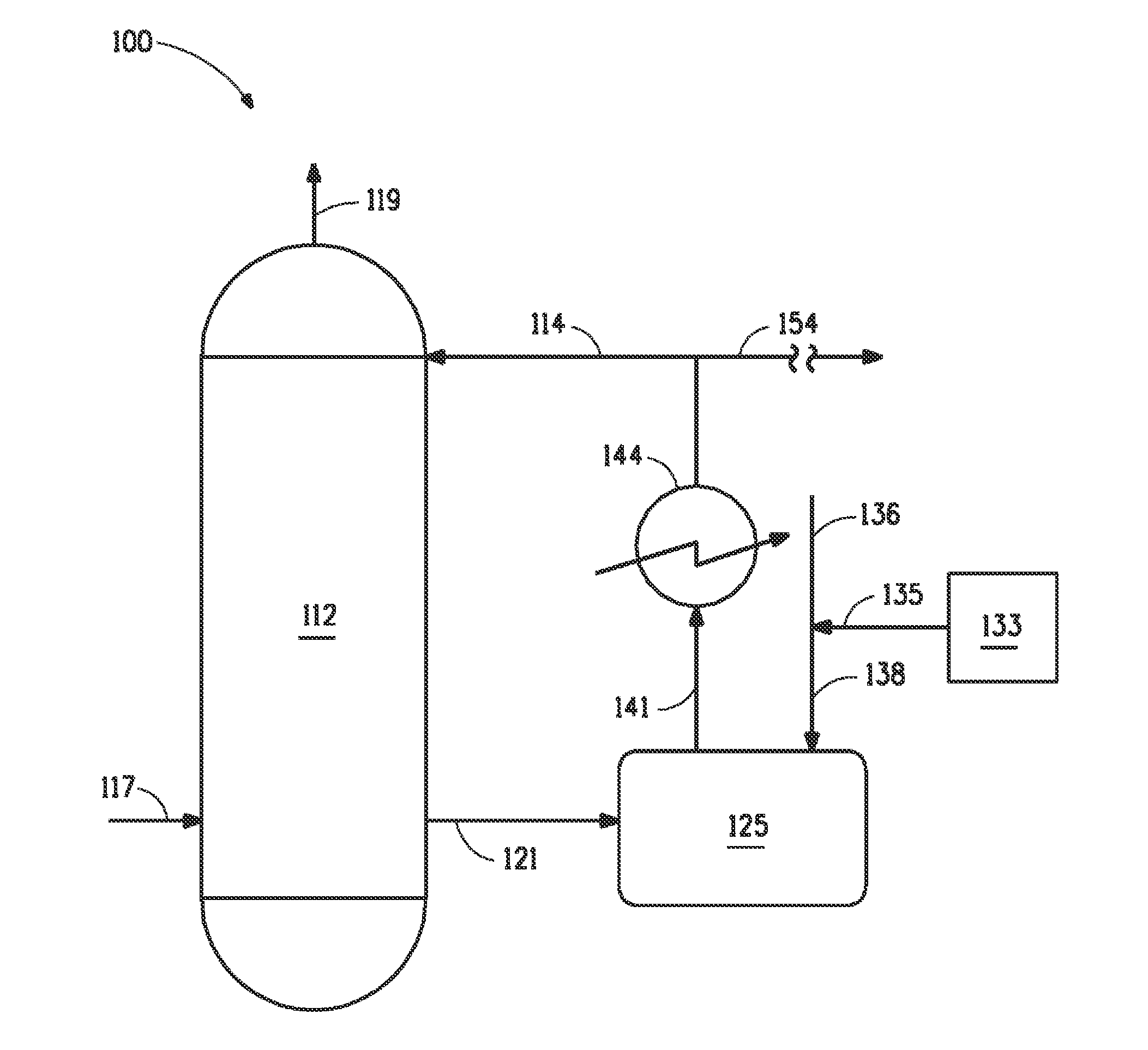Process for producing sulfuric acid with low levels of nitrogen oxides
- Summary
- Abstract
- Description
- Claims
- Application Information
AI Technical Summary
Benefits of technology
Problems solved by technology
Method used
Image
Examples
example 1
[0034]Laboratory samples of 99% sulfuric acid with 30 to 60 ppm NOx were treated with 1.2 times the stoichiometric amount of (di)hydrazine sulfate at 40° C., 90° C. and 100° C. The reaction rate at 40° C. was found to be rather slow. However, at temperatures of 90° C. and above, the rate of NOx consumption was found to increase rapidly. It was realized that the (di)hydrazine sulfate treatment could be used as an integral part of the sulfuric acid production where the sulfuric acid was typically 100° C. or more for a long enough period, at least 1-10 minutes, that substantial reduction of NOx can occur prior to recovering the sulfuric acid product.
example 2
[0035]Laboratory samples of 99% sulfuric acid were admixed with 1.2 times the stoichiometric amount of hydrazine sulfate at 40° C., 90° C., and 100° C. Table 1 is a graph showing the rate of niter reduction (ppm Niter / minute) in each sample as a function of temperature. As can be seen, the rate of niter reduction surprising increases exponentially as the treatment temperature is increased above 90° C. to 100° C.
PUM
 Login to View More
Login to View More Abstract
Description
Claims
Application Information
 Login to View More
Login to View More - R&D
- Intellectual Property
- Life Sciences
- Materials
- Tech Scout
- Unparalleled Data Quality
- Higher Quality Content
- 60% Fewer Hallucinations
Browse by: Latest US Patents, China's latest patents, Technical Efficacy Thesaurus, Application Domain, Technology Topic, Popular Technical Reports.
© 2025 PatSnap. All rights reserved.Legal|Privacy policy|Modern Slavery Act Transparency Statement|Sitemap|About US| Contact US: help@patsnap.com



